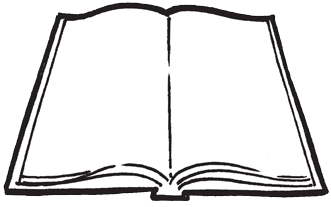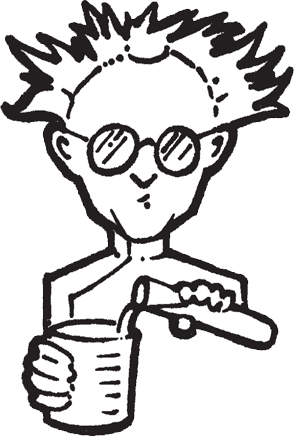18 Power Strategies
to Boost Reading & Writing Achievement on Standardized Tests
SECRET SITE
Quick Links
Skills 1-8 | Skills 9-18
SKILL #1 Broaden text-type exposure
Standardized reading assessments provide students multiple passages on a common topic, issue, theme, or genre—and then ask them to respond. These texts include a wide range of text types, lengths, perspectives, versions, and complexities.
Vary text types
-
Provide students similar multi-text experiences in your everyday classroom.
-
Utilize a mixture of literature (fiction) and information (nonfiction) text reading.
-
Utilize visual and multimodal texts.
-
Access videos, photos, illustrations, and infographics for each content area. See below for links.
“Read” visual texts
Reveal a Picture-of-the-Day and ask students to do the following:
- List 2-5 observable details. (I see ____.)
- Make 2-5 inferences based on observable details. (I infer ____ because ____ .)
- Make 2-5 predictions based on observable details. (I predict ____ because ____.)
Here are several free sources for fabulous photographs.
SKILL #2 Juggle multiple texts
Know the testing parameters
Consider mirroring the testing scenario, requiring students to read multiple texts on a single topic or theme all in one sitting.
Research shows that it takes students LONGER to read digital text than a hard-copy printout. Give your students experience reading online.
Access FREE resources
Create paired-text passages by adding an informational text article to the texts you’re already using. Check out these websites for FREE news articles, videos, and photos.
SKILL #3 Determine main ideas & theme
-
A topic is merely the text’s subject matter and can be identified in 1-3 words. However, the main idea of a text is explained as a complete sentence.
-
Each main-idea title tells you what the song will be about.
-
Picture books can be about the same topic, but have different main ideas.
-
Although several newspaper articles can be about the same topic, they each can have their own unique main idea (Examples: 2012 Super Bowl, Tsunami in Japan).
-
The main idea is a single sentence. But a summary includes multiple sentences that address the highlights of the passage.
Support Main Idea with Textual Evidence
-
The evidence is in the details. Repeated key words and phrases are proof of the text’s main idea.
-
If the headline is the main idea, then repeated key words, details, and phrases within the article are the evidence.
Define Theme
-
There are recurring thematic topics that appear with plots of literature and events in history.
-
There are even recurring themes in life. Observe several thematic categories and life messages along the interstate on Values billboards.
Theme is not simply a word or phrase. Those topical themes can be fleshed out into sentences specific to the text.
Watch eighth grade teacher Sara Johnson explain theme in four steps.
SKILL #4 Track relationships & interactions
Track Ideas in NONFICTION
-
Track a sequence of events or the development of an idea using a storyboard.
-
Retell a sequence of events or the development of an idea using the 2-step ABC Chart.
-
See the relationship between major events/concepts AND their corresponding settings.
-
See the relationship between major events AND 1 person/group.
-
See the relationship between major events
-
See the relationship between 2 simultaneous events.
-
See the relationship between 3 simultaneous events. Example of simultaneous events happening in the same time period during the Vietnam War.
Track Characters in LITERATURE
-
Track major events within the plot using a storyboard.
-
Retell 1 character’s actions throughout a text with the Who Am I? activity.
-
Track the evolution of a character, including actions and feelings from beginning to end. Examples from Mean Jean from The Recess Queen and Vashti from The Dot.
-
Track the evolution of 2+ characters within the story from beginning to end.
-
See the relationship between major events AND their corresponding settings.
-
See the relationship between major events AND 1 character’s actions/responses.
-
See the relationship between major events AND 2+ characters’ actions/responses.
Analyze Character Development
-
Define character development to include: motivations, actions, feelings, and traits.
-
Teach students the difference between fleeting feelings and tried & true traits.
-
Compare feelings versus traits with The Way I Feel (J. Cain) and The Way I Act (S. Metzger).
-
Target specific trait vocabulary using Manyak’s list of recommended traits per grade level and comparing these terms to simpler synonyms.
-
Using the Character Web, infer one trait a character possesses and cite textual evidence to support it.
SKILL #5 Interpret vocabulary
Look for context clues INSIDE an unfamiliar word.
-
A “root word” is any word part that carries meaning. Therefore, prefixes, suffixes, and bases are all examples of root words.
-
Introduce students to these three parts using the visual of a bicycle, as created by Beech Grove Middle School (Beech Grove, IN) teacher Sara Wiley.
Look for context clues OUTSIDE an unfamiliar word.
-
Train them to reverse and fast forward around the tricky word.
-
Teach the 8 types of context clues.
Identify clues to infer word meanings.
-
Using WordMarks—bookmarks for words—students note unfamiliar words in their everyday reading and approximate their meanings using context clues.
-
Context clues include visuals, too. With the Vocabulary Cartoon of the Day series, students practice inferring word meanings using a situational sentence and an illustration.
SKILL #6 Analyze physical text features
Identifying & using text features
Teach students that informational text has multiple entry points. Each text feature serves as a different place the reader can start reading and learning about the topic.
Conduct a digital scavenger hunt of text features using QR codes embedded into this PowerPoint.
Watch the video directions for a digital scavenger hunt of text features (Answer sheet).
Infographs communicate a lot of information visually. Teach your students the different types using these mini-posters.
Students communicate what info they learned from a particular feature with Information T.H.I.E.V.E.S.
More than naming types of text features, students have to know how they support the reader. What new information did the text feature provide beyond what was learned in the main article?
SKILL #7 Analyze organizational text structure
Introduce 6 common text structures
Introduce the most common text structures to your students using this slide show (PDF version, PPT version, Smartboard version).
-
Reveal each text-structure type using the same topic: Olympics passages, Traffic passages.
-
For a list of “pure text” examples sorted by each text structure, download this three-page document. All of these titles are available through The Literacy Store.
-
Here are short expository passages that have been written by teachers to demonstrate each text structure type.
Recognize relationships
-
Transitions within the text signal to the reader that the writer is shifting ideas. But remember, lists provided to student-writers should sort transitions by text structure—not by alphabetical order. Access a list of transition words more appropriate for elementary students.
-
Help students discern what structure a text is written in by noting the signal words. By highlighting those words before you read, students begin associating certain transitions with particular text structures.
SKILL #8 Determine purpose, POV, & perspective
Define key terms
-
Clarify the subtle, but significant differences among these three academic terms.
-
Watch a video of Kristina explaining these same terms.
Define types of argumentative evidence
Distinguish between perspectives
Reveal examples of the same topic/issue as seen from different viewpoints.
-
Students could then generate their own multi-perspective quick writes on other simple topics (PDF template, Word template).
Transition to looking at 2-3 AUTHORS’ texts using “What’s the Angle?”
-
Identify the perspective of each author.
-
Provide details the author cites as evidence for his opinion.
-
Check out an example on three different texts written about the Gold Rush. Access the original texts as well.
Cite textual evidence
-
Like many other assessment questions, students need to root their inferences/answers in evidence.
-
Provide sentence starters for them to construct a short response.
English / Language Arts



VIDEOS
- Compare Book to Movie Version/Excerpts (Video/article)
- Compare Book to Movie Version Handout
- The Paperman Animated Short and Sara Wiley’s handout of screen shots
- Defective Detective Animated Short and Sara Wiley’s handout of screen shots
- French Roast Animated Short and Sara Wiley’s handout of screen shots
PHOTOS
ILLUSTRATIONS
-
TV Commercials–includes charts/graphs to denote effectiveness
-
Clipart Gallery (B&W literature clipart)
INFOGRAPHICS
History / Social Studies



VIDEOS
PHOTOS
- Primary Source Guide
- 100 Milestone Documents
- National Archives Primary Sources
- History in Pictures
- Life.Time.com
- Rare Historical photos
- Picturing Modern America (1880-1920)
- Images from Canada
- Pictures of the Year International
- Picturing Modern America 1880-1920
- Life Magazine Archives
- Yahoo Daily News Photos
- The Week
- JFK Library Collections
- Virtual Tours
- Interactive Sites
ILLUSTRATIONS
- Timelines
- Maps
- Political Cartoons
INFOGRAPHICS
The Sciences



VIDEOS
PHOTOS
-
The Atlantic
-
Scientific American
ILLUSTRATIONS
-
Visible Body–some parts of site require subscription
-
Science Spot–Mystery images with clues
-
Crime & Puzzlement
INFOGRAPHICS
- Live Science–provides embed code to add infographics
Technical Subjects: Math



VIDEOS
PHOTOS
ILLUSTRATIONS
-
Morph the Data–different ways to show a math fact
-
Use Google Earth to show real-world math functions
INFOGRAPHICS
Technical Subjects: Music
VIDEOS
PHOTOS
-
Music in images–composes a song based on an image
ILLUSTRATIONS
INFOGRAPHICS
Technical Subjects: Art
VIDEOS
-
Virtual instructor–some free videos
-
Teacher Tube collection of fine arts instructional videos
PHOTOS
- Magazine Covers

